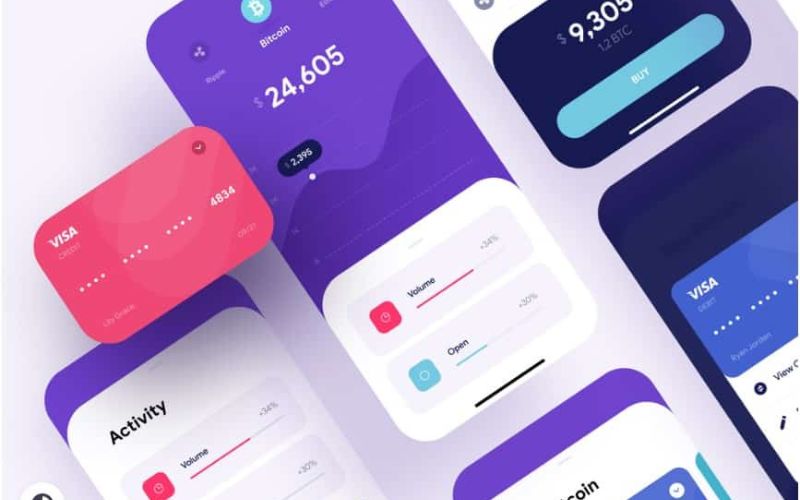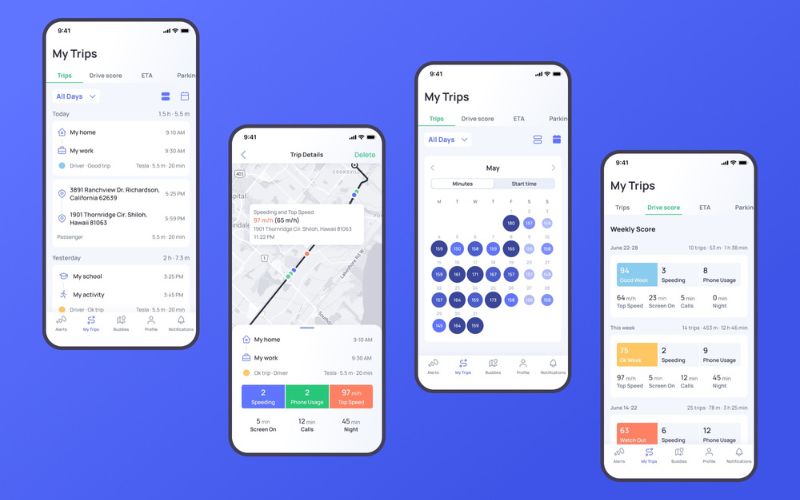Mobile
device traffic is expected to represent 47.28 percent of all American web
traffic in 2023. At this time, mobile traffic accounts for the largest share of
global internet traffic.
As a result
of such impressive numbers, the mobile business sector clearly needs to
continue to grow and develop in order to remain competitive.
Mobile
devices are getting more and more popular as a means of gaining access to your
products and services, resulting in a large percentage of your website visitors
and potential customers using them.
In addition
to the lack of internet connectivity and their geographic location, several
other factors play a role in the low conversion rates of mobile users.

Most
campaigns will not be converted in the same manner, which almost always leads
to counterproductive results.
Due to the
lack of effective use of mobile apps by businesses, conversion rates are not
increased as a result of exposing consumers to them.
The use of
mobile applications plays a pivotal role in mobile internet usage, so you can
increase conversions by optimizing them.
As a result
of the information in this guide on “how to improve app conversion rate”, you
will be able to achieve a high conversion rate.
But first,
let’s find out what does “mobile app conversion rate” mean?
What is the mobile
conversion rate?
The
conversion rate measures how many visitors to your app listing actually install
your app after viewing it on the website. You can calculate this rate by
comparing the number of people that view your app listing to the number of
people that install your app.
As well as
determining conversion rates, you can determine them by how many people have
installed your mobile app and purchased an in-app item within it. For instance,
a customer may choose to switch from a free to a premium subscription within
your mobile app shortly after installation.
You need to
know how to calculate the conversion rate of a mobile application in order to
succeed in e-commerce and blogging.
How to improve the mobile
app conversion rate?
Below we
have explained strategies with which you can easily achieve an iOS app
conversion rate.
Make Your App Easy to
Install
A
prospective client can be deterred from converting a building if the
installation process and accessibility are unclear after the conversion has
been completed.
Lead
generation and capture forms can be improved to increase your conversion rate,
which is a quick and easy improvement to make. The less information you ask for
from your customers, the higher the conversion rate.
The number
of abandoned leads can be reduced by eliminating the complexity of the sign-up
process, establishing a trusting environment, and providing support
information.
Optimize the App First
Impression
There are
typically two behaviors that visitors exhibit when you are attempting to
explain to them what it does within the first few seconds of visiting your
website.
- Decisive
Visitors: The creative elements that appear in the First Impression Frame are
the only elements that can be viewed by visitors who do not engage with the
page and do not choose to install an application or leave the app store. A
staggering 60% of all store visitors are Decisive visitors.
- Exploring
Visitors: An estimated 40% of traffic to the app store is generated by visitors
examining the content before downloading the app. Exploring visitors represent
the remaining 40%.
Smart User Segmentation
It is not
necessary for your app to cater to a particular niche or group of users.
Instead, you should create sections for different types of users with varying
interests.

The process
of becoming familiar with a wide range of target groups quickly will enable you
to meet their expectations, convert them into paying members and keep them on
your site for a long period of time.
A different
strategy is needed for each segment of your app users based on your risk
tolerance and the likelihood of loss since not all users convert in the same
way.
Customizing
your campaign for each group will provide you with a better understanding of
how to increase the conversion rate for each group.
Customize Your App on Each
Platform
It is
important to consider both the needs of the platforms and the users when
designing an application for multiple platforms.
In order to
maximize the success of your App Store campaign, it is essential that you
understand the differences between the Google Play Store and the Apple App
Store as well as the resources and campaigns available on each store.
If you are
interested in improving the conversion rate of your mobile application, you
need to understand the differences between Android and iOS.
🔘 Related: Selecting the best database for your iOS app: A comprehensive guide
Increase Application Speed
As a general
rule, mobile users have a greater impatience than their desktop counterparts.
Ideally, apps should load in as little as two seconds, and approximately 70% of
consumers believe that online speed influences their purchasing decisions.
Your
customers will be less likely to return to your website if it takes a long to
load, as they will be more likely to visit your competitors' sites.
If you are
interested in increasing the speed and conversion rate of your mobile app,
check out these tips: Choose a mobile-friendly theme that is compatible with
your desktop site and that does not interfere with it. Choose a theme that is
mobile-friendly.
In addition
to this, you may want to enable browser caching for your website so that repeat
visitors are provided with a seamless and uninterrupted experience each time
they visit.

Visitors to
your application or website may become discouraged if resources must be
retrieved every time they access them.
A cached
version of your website's content can be an effective method of keeping users
engaged since they visit your website several times before making a decision to
purchase your product.
Pay Attention to
Localization
Technology
and the Internet have contributed significantly to the growth of globalization,
facilitating the interaction of far-flung regions.
Consequently,
these regions exhibit significant differences, especially in terms of the variety
of potential clients.
Users from a
particular country may use the same conversion strategy as users from that
country, but their conversion rates may be different.
Implement
best practices in mobile app marketing by focusing on regional marketing. If
you want to ensure your app is well understood in each country, you should
translate your app into the local language of the country.
You can
increase the conversion rate of your mobile app by localizing it according to
the cultural preferences and needs of different regions, allowing your app to
appeal to a potentially large audience and therefore enhance its conversion
rate.
Optimize App for Store
Search
If someone
searches for your app, they must be able to see it in the search results so
that they can either download or install the app.
Consequently,
if you wish to keep customers satisfied with your app, you should optimize it
for search from the beginning.
Making your
app stand out directly in the top browser results of the app store can be
accomplished by creatively utilizing relevant keywords in its title,
description, screenshots, and icon.
The app's
pages become more relevant and concise with this change, which increases
installs and helps to make the text and design more relevant and accurate.

The skills
you develop as an app developer should be related to App Store Optimization
(ASO). Understanding ASO will enable you to rank your app high in search
results, increasing conversions.
Use Design Cues to Direct
the Site Visitor’s Attention
To help
visitors understand how to navigate your website and app, visual cues are
essential so that they are able to recognize the different sections and
segments that are available to them.
In order to
facilitate the user's use, elements of the design, as well as content, are to
be interpreted by the user in a manner that facilitates their understanding.
The Gestalt
approach to design has been incorporated in various ways. Gestalt psychology
derives from the German phrase "The whole is greater than the sum of its
parts.".
Thus, when
the different design elements are viewed all together rather than individually,
they have less impact on the whole design. However, the context in which they
are incorporated determines how much impact these elements have.
Create and Monitor the
In-App Funnel
An in-app
funnel is a description of the various phases involved in converting a mobile
application into a revenue generator.
Your
venture's in-app funnel needs to be determined, along with a strategy for
boosting conversions.
The app
users' involvement in your product discovery and consideration is the purpose
of each phase of your campaign, ultimately cementing an extended relationship
with you.
A successful
process requires strategies for every stage that are continuously updated
throughout the course of the process.
Your app
sales funnel needs to be identified at every stage, both on the web and on
mobile devices, in order to maximize sales and conversions.
Optimize Your Traffic
Sources
With the App
Analytics Update for iTunes Connect/App Store Connect, you can now identify
which sources of traffic lead to your Apple App Store product pages.
When you are
able to discover the potential of a particular traffic source, you can optimize
your marketing campaigns and user acquisition activities accordingly.
Following an
update to Google Play Console announced in 2018, users can now separate the
search experience on the Play Console from the browser.
You should
begin by identifying your most common app growth opportunities before
determining what channels you should target in order to achieve the highest
growth.
Retargeting
Using
retargeting, also known as remarketing, enables businesses to reach 98% of
their website visitors who do not convert right after leaving a website/app. It
is a method for continuing marketing to these bounced-off visitors.
Cookie-based
technology allows you to track your audience anonymously on the web by using
simple JavaScript code.
It is
extremely effective for increasing brand awareness and converting visitors into
customers to use retargeting, particularly when combined with inbound and
outbound marketing techniques.
By doing so,
you will stay in the minds of your app visitors, and they will be reminded to
return once they have left your app.
When
retargeting is done effectively, you can persuade your visitors that your
products/services are worthwhile and even encourage them to become customers
again.
Personalized Push
Notifications
The smartest
way to utilize your app users is to segment them based on their risk levels in
order to track their intentions when sending push notifications. By segmenting
your app users according to their risk levels, you will be able to double
conversions by targeting the right users.
The push
notifications can be customized for each group, enabling you to develop
separate strategies for different groups of users.
In order to
ensure the success of the push notifications, it is important to ensure that
they meet the expectations and requirements of each group.
In the case
of a push notification that is not relevant to the user's intentions, it will
not attract his or her attention.
Conclusion
All in all,
there are many iOS app design tips with which developers can build the strongest
apps for business owners.
If you have
a small business and you want to boos it, building an application is the best
way to stand out among competitors in the online world.
To do so, we
recommend that you consider the development team. It consists of many expert
specialists in web, desktop, iOS, and android app development. So just take a
look and see if there is anything we can help you with.